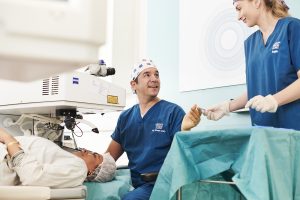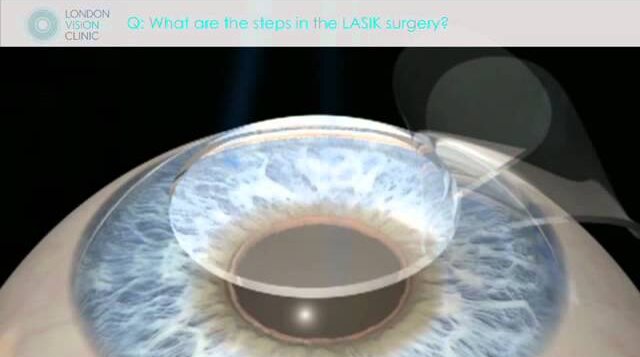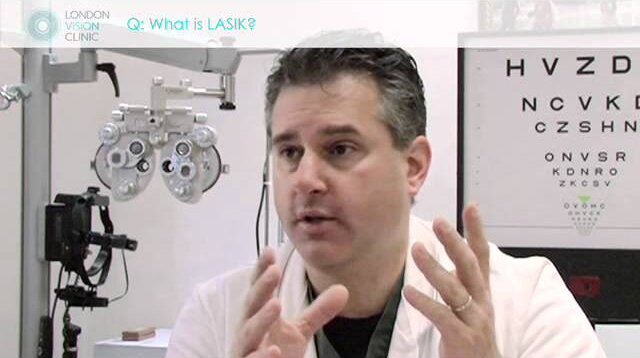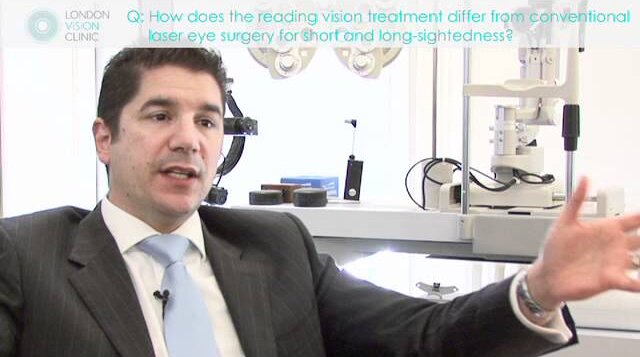Laser Eye Surgery Treatments: What is LASIK?

LASIK, also known as laser-assisted in-situ keratomileusis, is the most commonly performed Laser Eye Surgery procedure. LASIK was developed in the late 1990s and offered a much more efficient way to perform Laser Eye Surgery.
Like all forms of Laser Eye Surgery, LASIK involves reshaping the cornea to allow light to be more effectively reflected onto the retina at the back of the eye. However, unlike in earlier forms of the procedure like PRK, access to the corneal bed is gained via a flap in the cornea.
Either a microkeratome (blade) or a high-precision laser can be used to create an ultra-thin, hinged flap in the epithelium (surface layer) of the cornea. Once this is made, the surgeon can then use the calculations taken in the pre-operative examination to remove a pre-determined amount of tissue from the corneal bed.
In the video below, Mr. Glenn Carp explains the two phases of LASIK surgery.

Once the corrections have been made, the corneal flap can be put back in place. Thanks to the incredible healing power of the cornea, the cells around the flap begin to fuse almost immediately. This means that the likelihood of the corneal flap becoming dislodged is extremely small.
What are the steps in LASIK Surgery?
At London Vision Clinic, LASIK eye surgery consists of five key steps:
- Before LASIK treatment, the dimensions and properties of the untreated eye are minutely measured using such techniques as wavefront analysis and topographical mapping and through diagnostic instruments such as a pachymeter or an Artemis Insight 100. From these measurements, we calculate the precise amount of LASIK correction required during surgery.
- During LASIK surgery, a precision instrument called a microkeratome or a laser is used to create a thin flap in the corneal tissue. This flap remains anchored on one side – allowing the surgeon to replace it in its original position once the LASIK procedure is complete.
- The corneal flap is raised, and an excimer laser sculpts the bed of the cornea to the dimensions determined before LASIK surgery.
- The surgeon replaces the corneal flap and, within minutes, natural forces hold the flap in place and the LASIK procedure is complete.
- Within a few hours of the LASIK procedure, the surface of the cornea starts to grow over the cut edge of the corneal flap and to seal it in position. Healing is complete within a week or so after LASIK treatment.

As Professor Dan Reinstein explains in the video above, “We are able to extremely accurately reshape or take tissue from different areas to re-shape the bed, so that when you place this flap back on, you get a new shape and you focus people’s vision.”
What refractive errors can be treated with LASIK?
LASIK can be used to treat the full range of refractive errors, including myopia (short-sightedness), hyperopia (long-sightedness), and astigmatism. Thanks to the development of PRESBYOND® Laser Blended Vision, LASIK can even treat presbyopia (ageing eyes), as Mr Glenn Carp explains in the video below.

At London Vision Clinic, we are able to treat extremely high prescriptions that many other clinics are unable to achieve. It is estimated that over 90% of patients are now suitable for LASIK surgery.
However, patients with thinner corneas may be offered an alternative treatment such as PRK/LASEK or ReLEx SMILE. This is because there may not be sufficient corneal tissue to allow the creation of the corneal flap required in LASIK. Nonetheless, evidence shows that outcomes are similar across all forms of Laser Eye Surgery and safety and success rates are extremely high across all treatments.
If you’d like to learn more about LASIK or any of the other eye treatments available at London Vision Clinic, get in touch with one of our friendly clinic coordinators. Alternatively, Book a Consultation today to kickstart your journey to clear vision.


